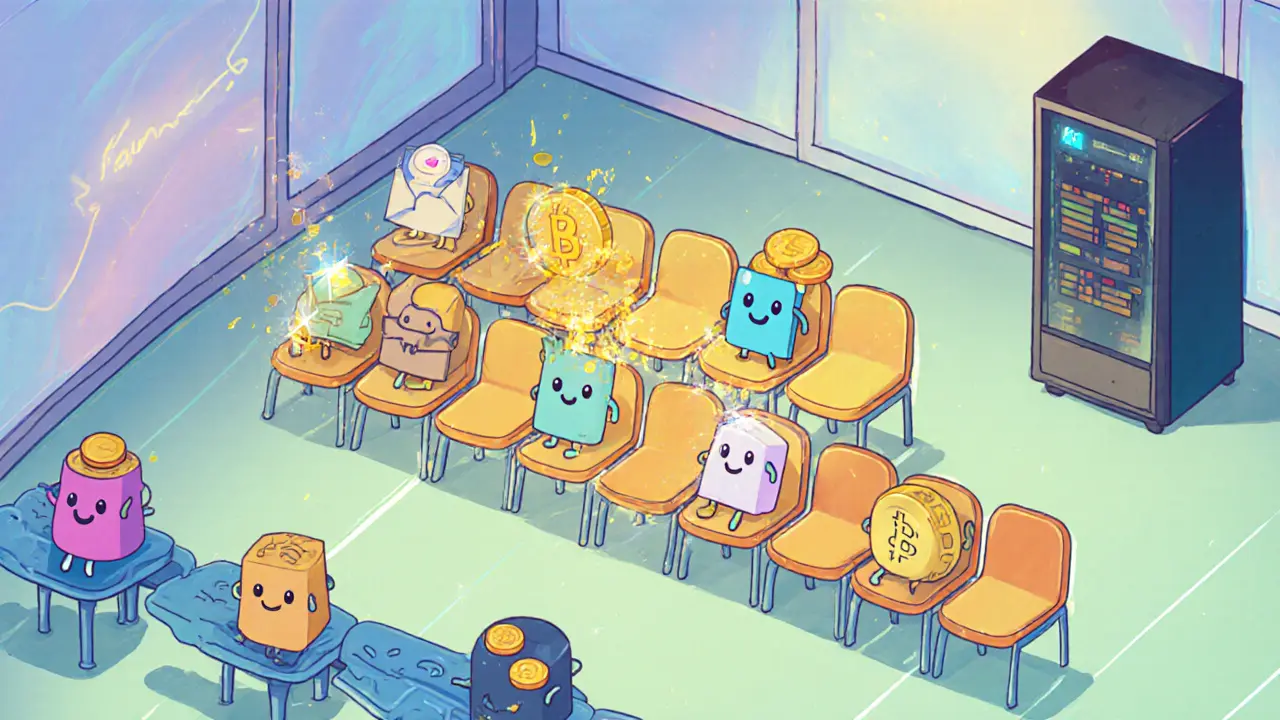Network Congestion in Crypto Networks
When dealing with network congestion, the overload of transaction traffic that slows down block confirmation and spikes fees. Also known as blockchain traffic jam, it can cripple user experience and hurt market liquidity.
Why It Happens and What You Can Do
One way to judge the problem is through blockchain scalability, a network's ability to handle growing transaction volumes without degradation. Poor scalability often leads to higher transaction fees, the cost users pay to get their transactions included. To combat this, developers roll out layer 2 solutions, off‑chain protocols that process transactions faster and cheaper. Meanwhile, efficient peer discovery, how nodes find each other and share data keeps the network responsive. Network congestion increases transaction fees, squeezes traders, and can push users to alternative chains. Layer 2 solutions reduce network congestion by moving most work off the main chain, which brings fees down and speeds up confirmations. Better peer discovery improves network resilience, allowing nodes to balance load more evenly during spikes. Real‑world examples show the pattern. During the DeFi boom of 2022, Ethereum’s gas prices surged above $200 because the base layer couldn’t absorb the surge of swaps, lending actions, and NFT trades. Binance Smart Chain saw similar stalls when popular token launches flooded the memecoin market. Those spikes forced many users to jump to cheaper side‑chains or to layer‑2 nets like Optimism and Arbitrum, where transaction costs stayed in the single‑digit range. Regulatory changes also affect congestion. When certain jurisdictions tightened crypto‑trading rules, overall volume on major exchanges dipped, but the remaining active users generated denser traffic on fewer platforms, creating localized bottlenecks. This illustrates that congestion isn’t just a technical issue; market dynamics, policy shifts, and user behavior all play a part. For developers, the takeaway is clear: design contracts that minimize on‑chain steps, integrate layer‑2 bridges where possible, and monitor peer‑discovery health with tools that flag slow‑handshake nodes. For traders, watching congestion metrics—like mempool size or average gas price—can signal when to pause, switch chains, or use a DEX aggregator that routes through less‑busy routes. Below you’ll find a curated set of articles that dig deeper into each of these angles, from peer‑discovery mechanics and layer‑2 overviews to fee‑analysis guides and real‑world case studies of network congestion across major blockchains.
Understanding Mempool Priority and How Transactions Are Selected
Learn how mempool priority works, what factors miners use to pick transactions, and tips to speed up confirmations in Bitcoin and Ethereum.
- 13
- Read More
